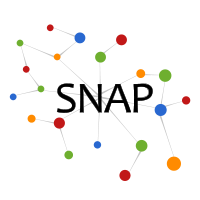Tissue-specific protein-protein interaction network
Dataset information
This is a collection of physical protein-protein interaction networks for a large number of human tissues. Nodes represent human proteins and edges represent tissue-specific physical interactions between proteins.
| Dataset statistics | |
|---|---|
| Nodes | 4510 |
| Edges | 70338 |
| Nodes in largest SCC | 4488 |
| Fraction of nodes in largest SCC | 1.000000 |
| Edges in largest SCC | 70316 |
| Fraction of edges in largest SCC | 0.999687 |
| Average clustering coefficient | 0.293465 |
| Number of triangles | 6698541 |
| Fraction of closed triangles | 0.045152 |
| Diameter (longest shortest path) | 6 |
| 90-percentile effective diameter | 3.324356 |
| Average tissues per edge | 52.127769 |
| Median tissues per edge | 42 |
| Standard deviation of tissues per edge | 43.543761 |
The information is based on physical protein-protein interactions supported by experimental evidence. Interactions based on gene expression and evolutionary data are not considered. Tissue-specific networks are constructed based on a global (i.e., tissue-nonspecific) network. Given a human tissue, every interaction in the global network is labeled as specifically co-expressed in that tissue. An interaction is specifically co-expressed if either both proteins are specific to that tissue or one protein is tissue-specific and the other is ubiquitous. Finally, a protein-protein interaction network specific to the tissue is a subnetwork of the global network, induced by specifically co-expressed interactions.
References
- Predicting multicellular function through multi-layer tissue networks. Marinka Zitnik and Jure Leskovec. Bioinformatics. 2017.
- Understanding multicellular function and disease with human tissue-specific networks. Greene, Casey S., et al. Nature Genetics. 2015.
- BRENDA in 2015: exciting developments in its 25th year of existence. Chang, Antje, et al. Nucleic Acids Research. 2014.
Files
| File | Size | Description |
|---|---|---|
| PPT-Ohmnet_tissues-combined.edgelist.gz | 712KB | Tissue-specific protein-protein interaction network (edgelist) |
| PPT-Ohmnet_tissues-data.txt.gz | 712KB | Network statistics for different tissues |



